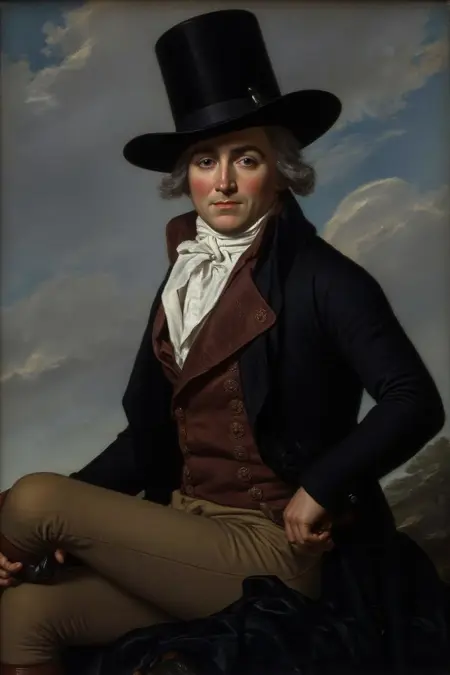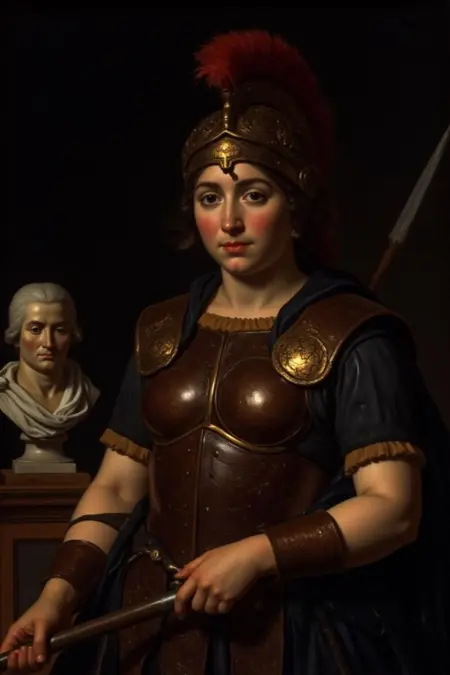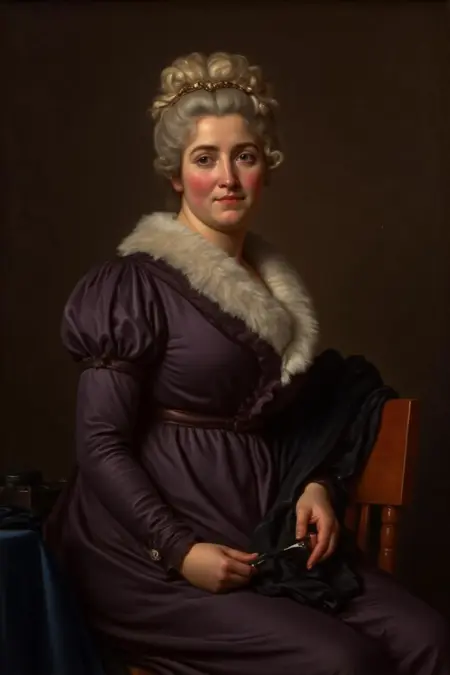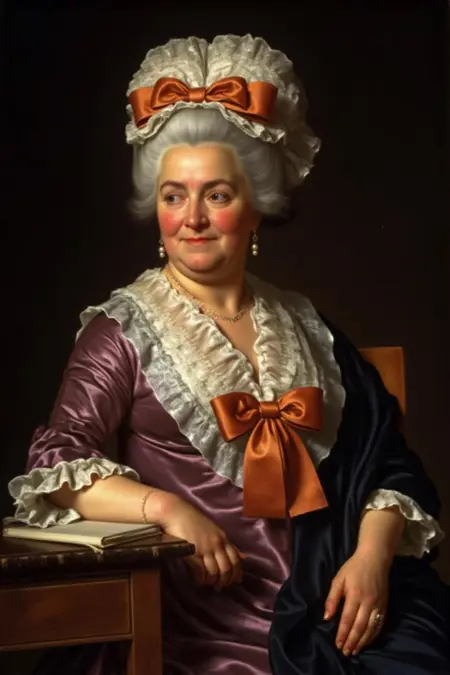French Neoclassic Portrait Style (Jacques-Louis David)
Details
Download Files
About this version
Model description
Trained on nineteen portrait paintings by the French Neoclassic painter Jacques-Louis David. For more of his work, please go to: https://www.wikiart.org/en/jacques-louis-david
According to ChatGPT:
Jacques-Louis David (1748–1825)
Jacques-Louis David was a prominent French painter and one of the most influential figures in the Neoclassical movement. Known for his mastery of classical themes, precision, and dramatic compositions, David’s work became synonymous with the ideals of the Enlightenment, the French Revolution, and later, the Napoleonic era. His art reflected his political affiliations and his ability to adapt to shifting political climates, leaving a lasting impact on both art and history.
Early Life and Education
Birth and Background:
Born on August 30, 1748, in Paris, France, into a prosperous bourgeois family.
His father died when he was young, and his uncles supported his education.
Artistic Training:
David studied under Joseph-Marie Vien, a proponent of the Rococo style, but later rejected Rococo's frivolity in favour of classical rigour.
He attended the Académie Royale and won the prestigious Prix de Rome in 1774, allowing him to study in Italy.
Influence of Classical Art:
During his stay in Rome, David was deeply inspired by Ancient Roman and Renaissance art, particularly the works of Raphael and Michelangelo.
He became determined to revive the classical ideals of simplicity, harmony, and moral virtue.
Career Highlights
Neoclassical Masterpieces:
David’s work epitomized Neoclassicism, emphasizing stoic heroism, rationality, and moral clarity.
His paintings often drew on classical mythology and history to convey Enlightenment ideals.
The French Revolution:
A passionate supporter of the Revolution, David aligned himself with radical leaders like Maximilien Robespierre.
He used his art as propaganda to celebrate revolutionary ideals and inspire civic virtue.
Napoleonic Era:
After the fall of Robespierre, David aligned with Napoleon Bonaparte, becoming his court painter.
He crafted grand portraits and scenes glorifying Napoleon’s rule.
Later Years and Exile:
Following Napoleon’s defeat and the Bourbon Restoration, David was exiled to Brussels, where he continued to paint.
He died in 1825, leaving behind a legacy as a master of history painting and an artist deeply tied to the political upheavals of his time.
Artistic Style
Neoclassical Characteristics:
Strong use of clean lines and smooth surfaces to evoke clarity and precision.
Dramatic, carefully composed scenes inspired by ancient Roman and Greek history.
A focus on moral themes, civic duty, and Stoic heroism.
Themes:
Patriotism and sacrifice for the greater good.
The conflict between personal emotion and public duty.
The glorification of historical figures and events.
Key Works
The Oath of the Horatii (1784):
Depicts three Roman brothers swearing to defend their city, embodying the virtues of loyalty and sacrifice.
A foundational work of Neoclassicism, showcasing dramatic poses, clean lines, and a moral message.
The Death of Socrates (1787):
- Portrays Socrates calmly accepting his fate, emphasizing rationality and moral conviction.
The Lictors Bring to Brutus the Bodies of His Sons (1789):
- A chilling image of Brutus, the Roman consul, who sacrifices his sons for the good of the Republic.
The Death of Marat (1793):
- A haunting portrayal of the revolutionary leader Jean-Paul Marat after his assassination, presenting him as a martyr of the Revolution.
Napoleon Crossing the Alps (1801):
- A heroic depiction of Napoleon, idealized as a leader of monumental strength and vision.
The Coronation of Napoleon (1805–1807):
- A grand and detailed depiction of Napoleon crowning himself and Josephine in Notre-Dame Cathedral, symbolizing his power and ambition.
Legacy
Influence on Art:
David’s works became the benchmark for history painting in the 19th century.
His focus on precision, classical themes, and moral ideals influenced Romantic artists like Eugène Delacroix and Realists like Gustave Courbet.
Cultural and Political Impact:
His art shaped public opinion during critical periods in French history, blending propaganda with classical ideals.
David remains a symbol of the power of art to reflect and influence political change.
Neoclassical Movement:
- David is considered the leader of Neoclassicism, a movement that sought to revive the grandeur and moral rigor of antiquity.
Conclusion
Jacques-Louis David’s life and work were deeply intertwined with the political and cultural revolutions of his time. Through his powerful compositions, he defined an era of Neoclassical art that celebrated the ideals of heroism, sacrifice, and rationality while remaining a witness to the dramatic transformations of late 18th and early 19th-century France.




















